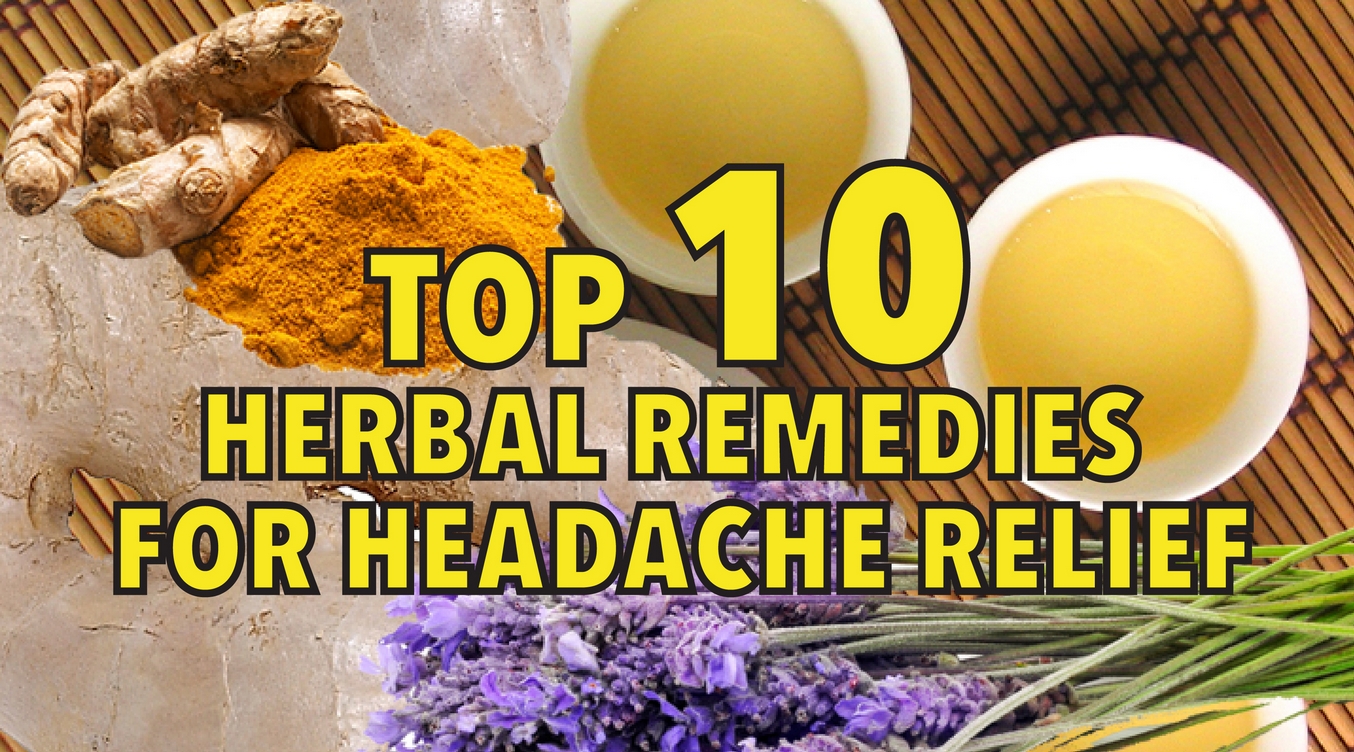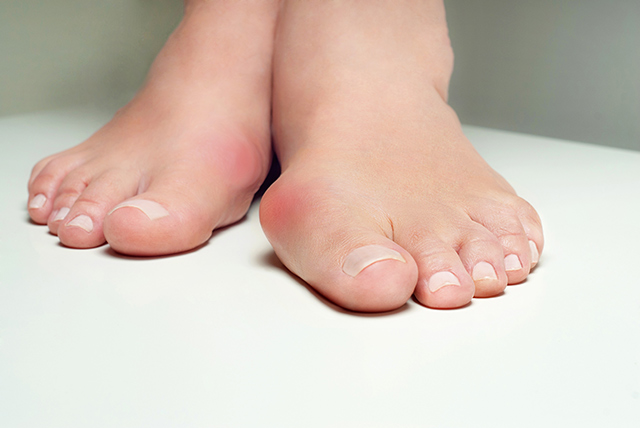Top 10 herbal remedies for headache relief
09/04/2015 / By Greg White

Headaches can be caused by anything from caffeine withdrawal to one too many cocktails. Whenever you feel like a jackhammer is chipping away at your skull, it can be very hard to concentrate, let alone work.
Their are two different types of headaches: primary headaches and secondary headaches. Primary headaches encapsulate a variety of headaches including tension headaches, migraine headaches and cluster headaches. Migraine and cluster headaches are episodic and recurring conditions, while tension headaches are episodic and can become chronic. Secondary headaches are much more serious than primary headaches. Many different neurological disorders can trigger a secondary headache, including tumors, aneurysms or infections.
Many people resort to their nearest medicine cabinet at the first signs of a headache. Yet these medications can have dangerous side effects and, can be toxic to various organs. Fortunately, there are plenty of natural ways to treat a headache. Here are 10 herbal remedies that can help alleviate a headache naturally.
1. Drink lots of water boiled with ginger
Ginger tea has been used for centuries in the Eastern world to treat a number of ailments. Crush an inch of ginger root and add it to one cup of water. Let the water boil for at least five minutes. Homemade ginger tea will reduce inflammation associated with a headache in just about the same time it would take an aspirin to work. A study published in the Journal of Phytotherapy Research showed that the properties of ginger are comparable to those of sumatriptan, which is a common migraine medication. The anti-inflammatory, antiviral, antifungal and antibacterial properties of ginger are a sure way to keep headache symptoms at bay.
The power of the elements: Discover Colloidal Silver Mouthwash with quality, natural ingredients like Sangre de Drago sap, black walnut hulls, menthol crystals and more. Zero artificial sweeteners, colors or alcohol. Learn more at the Health Ranger Store and help support this news site.
2. Massage the scalp with lavender or peppermint oil
Peppermint and lavender are an effective treatment for headaches. Take a couple of teaspoons of coconut oil, and add a few drops of peppermint and lavender essential oils. Massage the mixture on the scalp, forehead temples, and neck. Lavender oil has been used as an anxiolytic drug, mood stabilizer, spasmolytic, antihypertensive and analgesic agent. Studies have attested that inhaling lavender oil may be an effective treatment for headaches and migraines. Other studies have attested that peppermint oil and eucalyptus oil improve cognitive performance and can help relax both your body and mind.
3. Green tea with a dash of lemon juice
Green tea is packed with powerful antioxidants and nutrients. It helps stimulate the nervous system and eliminate free radicals from the body, which are unstable molecules that damage DNA. The moderate amounts of caffeine in green tea can help mitigate a headache too. The caffeine aids the body in absorbing other medications quickly and efficiently. Brew a little green tea, add a dash of honey or lemon juice, and drink it warm to achieve the quickest results.
4. Turmeric is great for alleviating a migraine
Curcumin, the chemical compound present in turmeric, is an antioxidant with anti-inflammatory properties. Studies have shown that curcumin is able to reduce COX-2, which is an inflammatory enzyme. You can combat a headache caused by a viral infection by inhaling the steam of hot water mixed with turmeric. This will relieve inflammation of the nasal cavities and provide relief to your headache.
5. Eat a tablespoon of honey mixed with 1/4 teaspoon lemon juice
Many headaches are triggered by low blood sugar levels, which in turn cause low blood pressure. One of the best herbal remedies for this kind of headache is a teaspoon of honey mixed with lemon. As a source of sugar, honey can provide relief to a headache by raising low blood glucose levels. Honey can gradually elevate blood glucose, since it is digested by the body within 10-15 minutes. Dark honey tends to have more antioxidants than light honey, so the former tends to be a better treatment option than the latter.
6. Apply a mixture of peanut butter and grated ginger to your temples
Holistic therapists recommend applying a mix of peanut butter and ginger to your temples to alleviate a headache. The body absorbs magnesium and arginine in the peanut butter, aiding the blood vessels to release pressure. While some people say that applying ginger is more than enough, others have reported that combining the two is even more effective.
7. Use a preparation of feverfew
Feverfew is a supplement from the sunflower family that helps reduce inflammation. In a study conducted at the Headache Care Center in Missouri approximately 60 participants were treated with either sublingual feverfew and ginger or a placebo. After two hours, almost 63 percent of the patients receiving feverfew/ginger experienced pain relief, whereas only 39 percent of the patients receiving the placebo experience pain relief. The sublingual feverfew/ginger appeared to be a safe, effective treatment for mild headaches.
8. Skullcap helps calm nerves and ease headaches
Skullcap is a comforting herb, traditionally used to treat tension and exhaustion. As an antispasmodic, skullcap can help treat insomnia, muscle spasms, anxiety, premenstrual symptoms, teething and, of course, headaches. It is often used in combination with other herbal remedies, like lemon balm, and is usually consumed as a tincture, tablet, capsule or tea.
9. Drink a cup of rosemary tea
Rosemary tea is packed with antimicrobial, antispasmodic and antioxidants compounds that can ease pain and provide relaxation. Boil a cup of water and add one teaspoon of rosemary tea. Allow it to brew for about 10 minutes covered up. You can sweeten it with a dash of honey. Drink the hot tea slowly and your headache should gradually fade away. You can also use rosemary essential oil by applying it topically or inhaling it.
10. White willow bark can reduce inflammation
Willow bark has been used for thousands of years for medicinal purposes. The herb contains the chemical salicin, which is responsible for reducing inflammation. The willow family includes many species. The willow bark sold in Europe and the United States contains bark from white, purple and crack willows. Willow bark is teaming with antioxidants, which can help boost the immune system and reduce a fever. People with stomach problems may want to avoid willow bark, however, since it can have gastrointestinal side effects.
Warning: Just like any other medication, herbs can have side effects. It is important that you use these herbal remedies with care, since they can interact with other medications you may be taking.
Cultures across the globe have relied on herbal remedies to treat their headaches for centuries. By following ancient wisdom, you can treat your headaches naturally without resorting to over-the-counter drugs laced with synthetic chemicals.
References:
Tagged Under: headaches, herbal remedies, inflammation, migraines, natural medicine, pain relief




















